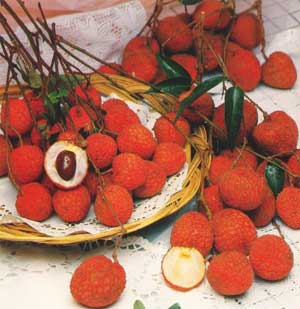To reduce losses for farmers and extend the storage time of fresh lychee for long-distance transportation, the Southern Fruit Research Institute (SOFRI) has recently successfully researched and recommended a new method for treating and preserving fresh lychee.
 |
(Photo: thaitradesourc) |
According to the research team, applying this method can preserve fresh lychee for up to one month while maintaining color and quality, providing high efficiency for both growers and traders. NNVN summarizes this process for farmers to reference and apply:
– Harvesting: Carefully harvest the lychee on dry days, avoiding rainy days. Harvest when the fruit skin is uniformly bright red (approximately 102-109 days after flowering). Tie the lychee into bunches of about 3-5 kg or place them in perforated plastic baskets of around 10 kg. Remove any cracked, bruised, unevenly ripened, or misshapen fruits.
– Preparing Materials: The materials and chemicals needed include: hydrochloric acid (HCl) or sodium bisulfite (NaHSO3), dipping tank, fan, plastic baskets, etc.
– Treatment: Dip each bunch or entire plastic basket of lychee into a sodium bisulfite solution for 10 minutes (mix 60g of NaHSO3 in 1 liter of clean water, stirring until completely dissolved). The sodium bisulfite solution helps to harden the fruit skin, minimize water loss, and kill bacteria and fungi that may harm the fruit. Remove and then dip into a 4% hydrochloric acid solution for about 2-5 minutes. The hydrochloric acid solution helps to retain color and keep the fruit skin fresh, thus increasing its commercial value.
– Packing, Preserving, and Transporting: After treatment, allow the lychee to dry naturally or use a fan to dry them before packing in styrofoam boxes for transportation using refrigerated vehicles or storing in a cool warehouse with a temperature of 4-5 degrees Celsius and humidity of 90-95%. It is also possible to use polyethylene plastic bags to hold the lychee, which helps prevent water loss and maintain the fruit skin color for a longer time.



















































